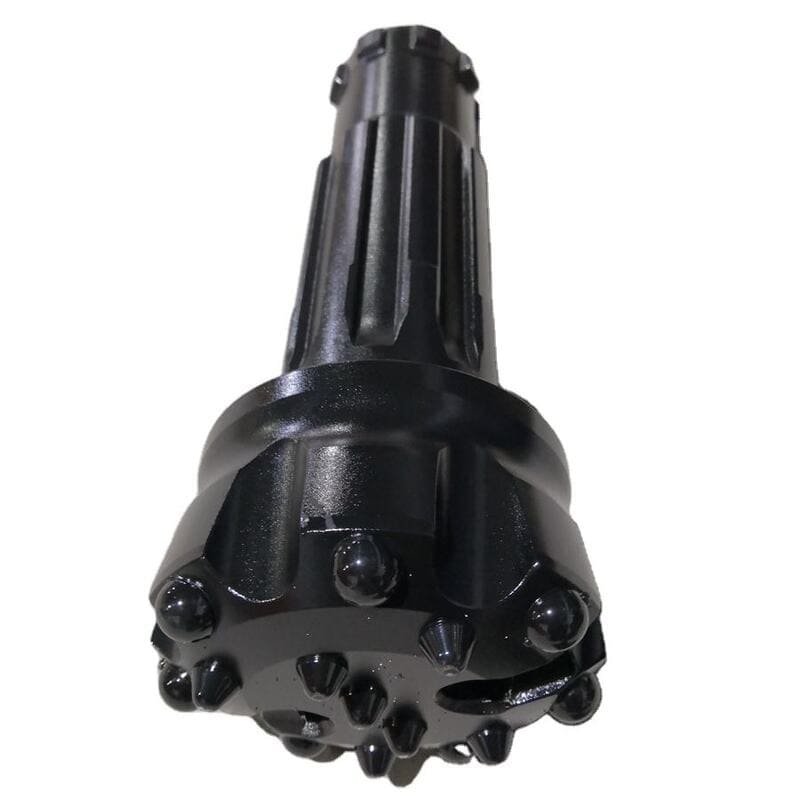Ever wondered how DTH drill bits perform in different types of rock? Let me share some insights from my own experience.
DTH drill bits can penetrate soft rocks like shale at 15-40 feet per hour, moderately hard rocks like sandstone at 10-20 feet per hour, and hard rocks such as granite at 5-15 feet per hour. These rates vary depending on the rock type and other factors like bit design and operator skill.
I’ve spent countless hours on drilling sites, adjusting strategies to squeeze out those extra few feet per hour. It's fascinating how the texture of the rock underfoot influences everything. Beyond just knowing the numbers, understanding how to adjust your approach based on the real-time feedback from the equipment and environment is where the art of drilling truly lies. Factors like the precision of the bit design or the sheer power of the hammer can make a noticeable difference, especially when you're racing against time to hit project milestones.
DTH drill bits penetrate granite at 5-15 feet per hour.True
Granite is a hard rock, limiting DTH drill bit penetration to 5-15 ft/hr.
Shale allows DTH drill bits to penetrate at 50 feet per hour.False
Shale, being soft, allows 15-40 ft/hr, not as high as 50 ft/hr.
How does rock hardness affect drilling performance?
Ever wondered why some days your drill flies through rock like butter, while other days it feels like you're trying to bore through a brick wall?
Rock hardness directly impacts drilling performance by affecting how quickly a drill penetrates the surface and how long your tools last. Softer rocks are a dream to work with, speeding up the process with minimal wear and tear, while harder rocks slow things down and can chew up equipment.
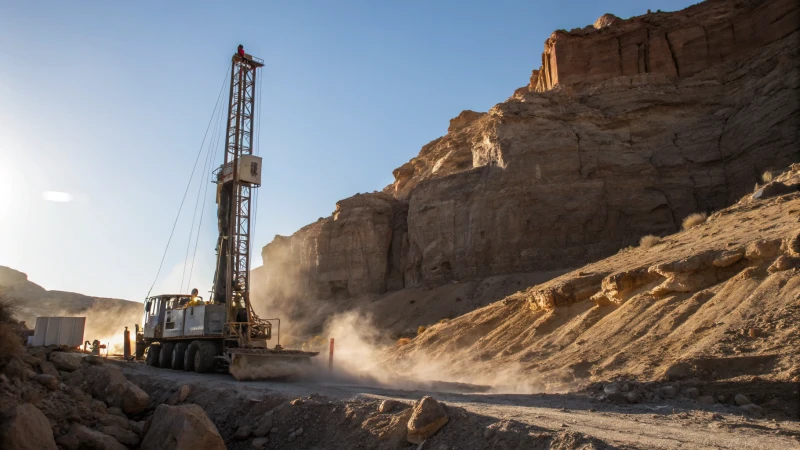
Understanding Rock Hardness and Drilling
When I first started out in the drilling industry, I quickly learned that not all rocks are created equal. The Mohs Hardness Scale, which ranks rocks from 1 (soft as talc) to 10 (hard as diamond), became my go-to reference. This scale is crucial for predicting drilling outcomes and choosing the right drilling equipment1 for different rock types.
Penetration Rates Across Rock Types
| Rock Type | Mohs Hardness | Penetration Rate (feet/hour) |
|---|---|---|
| Soft Shale | 1-3 | 40 |
| Granite | >9 | 5 |
I remember tackling a soft shale formation once and feeling like a superhero as the drill zipped through at 40 feet per hour. But when it came time to face down some granite, it was like the rock was laughing at me, slowing progress to a snail's pace of 5 feet per hour.
Factors Influencing Drilling Efficiency
- Bit Design: A well-designed bit is like a trusty sidekick. The right configuration with strategically placed buttons can make all the difference in hard rock scenarios.
- Hammer Performance: A powerful hammer is essential for dense rocks. Choosing the right one is critical to maintaining consistent penetration2 rates.
- Drilling Fluids: Managing drilling fluids can be a game-changer. They help keep everything cool and clear debris, ensuring your bit performs at its best.
By understanding these factors and how they interplay with rock hardness, I've been able to select the appropriate equipment and methods3 to enhance drilling operations, avoiding premature equipment failures and getting the job done right.
Mohs Scale measures rock hardness from 1 to 10.True
The Mohs Hardness Scale is a widely used method to rate rock hardness.
Soft rocks have penetration rates over 40 feet/hour.False
Soft rocks have penetration rates of 15-40 feet/hour, not over 40.
What Factors Influence DTH Drill Bit Penetration Rates?
Ever felt like drilling is a bit of a mystery? Let me share some insights that might just make it click.
DTH drill bit penetration rates depend on rock hardness, bit design, hammer performance, and operational techniques. By fine-tuning these factors, I can significantly boost my drilling efficiency.
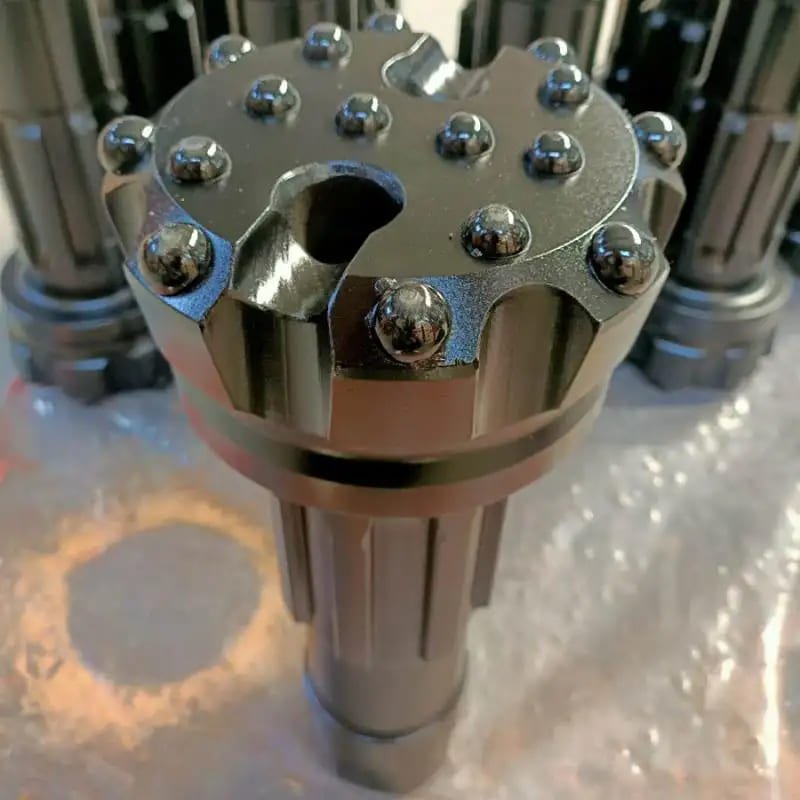
Rock Hardness and Composition
I remember the first time I encountered shale—it felt like cutting through butter. But when I hit granite, it was a whole different story. Different rocks have unique hardness levels, which really affects how quickly I can drill. For example:
| Rock Type | Mohs Hardness | Penetration Rate (ft/hr) |
|---|---|---|
| Soft (Shale) | 1-3 | 15-40 |
| Moderate (Basalt) | 4-6 | 10-20 |
| Hard (Granite) | 7-9 | 5-15 |
Soft rocks like shale let me zip through at a decent pace, but tougher rocks like granite slow things down considerably.
Drill Bit Design
I've learned that not all drill bits are created equal. The layout of the buttons and the face design can make a huge difference. Some advanced drill bit technologies4 I've tried have actually improved my penetration rates by quite a bit.
Hammer Performance
Once, I used a hammer that wasn't powerful enough for the rock I was dealing with, and it was like trying to crack a nut with a feather. Matching the hammer's power to the rock conditions is crucial. A strong hammer can make all the difference in drilling through tough layers efficiently.
Operational Techniques
I've found that tweaking operational techniques like weight-on-bit and rotational speed based on the rock type and conditions can optimize drilling. Real-time adjustments are key, and I've benefited from training programs that focus on drilling best practices5.
Additional Factors
Borehole diameter and drilling fluids also play their part. Smaller diameters can speed up drilling because there's less material to remove. And don't get me started on drilling fluids6—they're vital for cooling and debris removal, which helps keep things running smoothly.
Understanding these factors isn't just about improving performance; it's about mastering the art of drilling in varied geological conditions. With this knowledge, I've been able to optimize my approach and equipment, making each project a little more efficient.
Softer rocks allow faster drill penetration rates.True
Soft rocks like shale (Mohs 1-3) allow higher rates of 15-40 ft/hr.
Hammer strength is irrelevant to penetration rates.False
Hammer power directly affects penetration; stronger hammers improve rates.
How to Choose the Right DTH Drill Bit for Your Project?
Ever stood in the middle of a drilling site, staring at a pile of DTH drill bits, wondering which one is the perfect match for your project? I’ve been there too.
To choose the right DTH drill bit, focus on rock hardness, bit design, and hammer compatibility. By aligning bit features with geological conditions, you can boost drilling efficiency and prolong tool life.
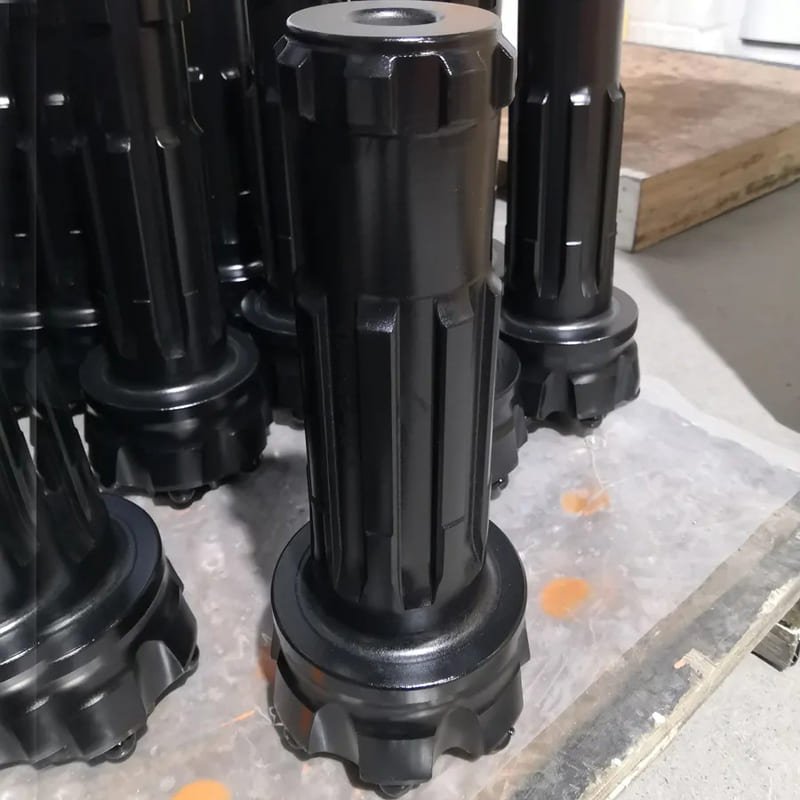
Understanding Rock Hardness and Bit Selection
I remember my first major project when I learned the importance of rock hardness in selecting a DTH drill bit. The Mohs hardness scale became my best friend, categorizing rocks from 1 (soft) to 9 (hard). Back then, I was dealing with shale, a soft rock7, which needed larger buttons and an open face design. In contrast, for a hard rock like granite8, smaller buttons with a concave face were more appropriate.
| Rock Type | Examples | Mohs Hardness | Recommended Bit Features |
|---|---|---|---|
| Soft | Shale, limestone | 1-3 | Larger buttons, open face design |
| Moderately Hard | Sandstone, basalt | 4-6 | Medium-sized buttons, semi-ballistic design |
| Hard | Quartzite, granite | 7-9 | Smaller buttons, concave face design |
Evaluating Bit Design
Bit design was a game-changer for me. The first time I used high-grade tungsten carbide buttons, I was amazed at the durability they added to my project. Face design also matters—I learned the hard way that flat faces work differently than concave or convex ones. Efficient cuttings removal through strategic flushing holes also made a big difference in performance.
- Button Material: High-grade tungsten carbide buttons enhance durability.
- Face Design: Options like flat, concave, or convex faces suit different applications.
- Flushing Holes: Efficient cuttings removal through strategically placed holes.
Consider how these factors align with your project's geological conditions.
Compatibility with DTH Hammers
Matching bits with hammers felt like solving a puzzle. Ensuring the bit size aligned with the hammer meant efficient energy transfer and better penetration rates. Larger hammers naturally required larger bits—something I discovered after experiencing inefficient drilling when the sizes didn’t match.
- Hammer Size: Large hammers need equally large bits for optimum performance.
- Energy Transfer: Alignment between bit and hammer boosts energy efficiency.
Additional Factors to Consider
- Drilling Speed Requirements: I often had to balance speed and wear resistance to meet tight project timelines.
- Cost vs. Performance: Sometimes, spending more upfront saved money in the long run due to extended tool life.
- Environmental Conditions: Temperature and moisture levels affected bit wear more than I initially expected.
Selecting the right DTH drill bit is like piecing together a puzzle where understanding geological conditions and ensuring equipment compatibility are key. Dive deeper into drill bit designs9 or hammer performance10 to make an informed choice for your next big project.
Soft rocks require larger button bits.True
Soft rocks like shale need larger buttons for efficient drilling.
Hard rock bits have convex faces.False
Hard rock bits typically use concave, not convex, face designs.
What Are the Biggest Hurdles in Drilling Through Hard Rocks?
I remember my first encounter with hard rock drilling—it was like trying to drive a nail through a block of steel. The sheer resistance and wear on equipment were eye-opening.
Common challenges in drilling hard rocks include high equipment wear, reduced penetration rates, and increased energy consumption. To tackle these, choosing the right tools and optimizing drilling parameters is essential.
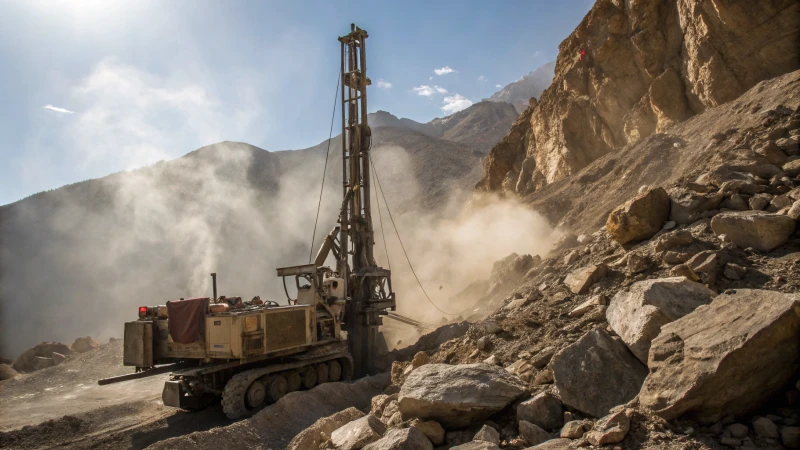
Equipment Wear and Tear
I've learned the hard way that drilling through granite and quartzite is no small feat. These tough materials can chew through drill bits like they're candy, leading to frequent stops for maintenance and replacements. It's frustrating but necessary—ignoring it means risking even longer downtimes and higher costs.
| Rock Type | Examples | Impact on Equipment |
|---|---|---|
| Hard Rocks | Granite, Quartzite | High wear rate on drill bits |
| Very Hard Rocks | Diorite, Basalt | Extreme wear requiring robust tools |
Reduced Penetration Rates
I vividly recall working with quartzite; the drilling felt like slow-motion. Imagine inching forward at a snail's pace of just 5-15 feet per hour. This crawl not only tests patience but also stretches project timelines and budgets.
Increased Energy Consumption
Every time I operate those high-power hammers, I can't help but wince at the fuel gauge dipping lower and lower. These machines guzzle energy, translating into skyrocketing costs—a necessary evil to punch through those stubborn surfaces.
Managing Heat and Pressure
There was this one time when the heat from drilling nearly melted down our equipment—literally! That's when I realized how vital cooling systems are. And managing pressure? It's like trying to balance a seesaw; too much or too little can mess up debris removal and disrupt progress.
Operator Expertise
It's a bit of an art, really. The seasoned operators I've worked with have an uncanny knack for tweaking settings on the fly, boosting efficiency tremendously. Their expertise is invaluable—sometimes, it's the difference between a smooth operation and a disaster.
For more insights on this topic, exploring resources like operator skill and experience11 may provide valuable strategies to overcome these challenges effectively.
Granite causes high wear on drill bits.True
Granite's abrasive nature leads to significant wear on drilling equipment.
Diorite drilling achieves 20 feet per hour.False
Diorite, being very hard, typically results in lower penetration rates.
How Does Operator Skill Enhance Drilling Efficiency?
Ever wondered how the magic touch of a skilled operator can revolutionize drilling efficiency?
Operator skill improves drilling efficiency by fine-tuning equipment usage, responding to real-time feedback, and adapting practices to geological conditions. This expertise minimizes downtime and boosts penetration rates.
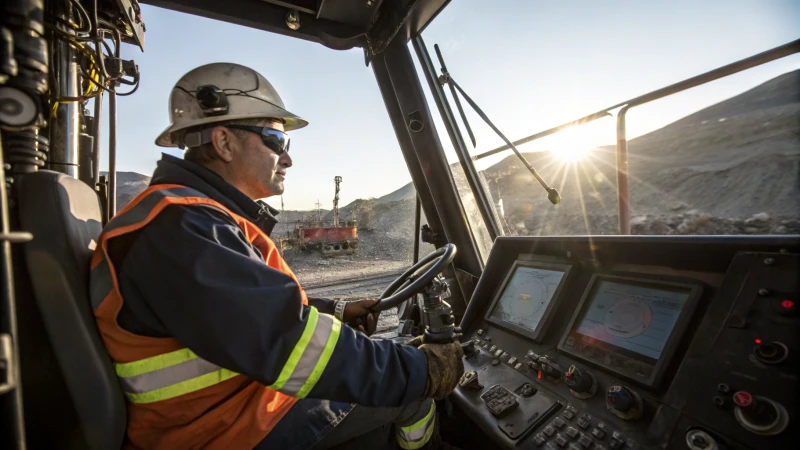
The Role of Operator Expertise in Drilling Operations
When I first stepped into the world of drilling, I quickly learned that it's not just about powerful machines or state-of-the-art technology. It's about the person behind the controls. A seasoned operator knows their equipment like an old friend. They have this knack for adjusting drilling parameters—like rotation speed and fluid pressure—just right, all while considering the ever-changing dance of geological conditions.
Real-Time Adjustments
I remember watching an operator in action during a particularly tricky drilling project. The rock formations shifted from soft shale to stubborn granite, each demanding a different approach.
| Rock Type | Adjustment |
|---|---|
| Soft Rock (Shale) | Increase rotation speed |
| Hard Rock (Granite) | Decrease rotation speed |
In shale, the operator cranked up the rotation speed, slicing through layers effortlessly. But when granite appeared, he smoothly adjusted the speed down, preventing unnecessary wear on the drill bit. It was a masterclass in real-time decision-making.
Leveraging Technology for Improved Outcomes
Modern drilling is a fusion of technology and expertise. We often rely on advanced monitoring systems that provide a flood of real-time data. A skilled operator interprets this data like a maestro, orchestrating a symphony of drilling strategies that optimize both the drill bit and hammer's performance based on real-time data12.
Training and Knowledge Transfer
Continuous learning is our lifeline. Training isn't just about repetitive drills; it's about expanding one's understanding of material properties, mastering equipment maintenance, and ensuring safety protocols are second nature. Our training programs delve into topics like:
- Understanding material properties (e.g., hardness)
- Equipment maintenance and troubleshooting
- Safety protocols and environmental considerations
Impact on Equipment Longevity and Maintenance Costs
I've seen firsthand how a skilled operator can breathe life into machinery, extending its lifespan through careful handling. By reducing stress on tools, they minimize wear and tear, which translates to lower maintenance costs and less downtime. It's this delicate balance that ensures our equipment hums along at peak efficiency throughout its lifecycle.
In essence, an operator's skill is the invisible hand that guides drilling efficiency by aligning real-time decision-making with technological insights and industry best practices. This leads to optimized equipment performance and reduced operational costs across varied geological scenarios.
Operators increase rotation speed in soft rock.True
In soft rock, increasing rotation speed maximizes penetration rates.
Training is unnecessary for skilled operators.False
Ongoing training is crucial to keep operators updated on new technologies.
Conclusion
DTH drill bits penetrate various rock types at different rates: 15-40 ft/hr for soft shale, 10-20 ft/hr for sandstone, and 5-15 ft/hr for hard granite.
-
Learn about equipment specifically designed for varying rock hardness levels to optimize drilling efficiency and reduce wear. ↩
-
Explore strategies for sustaining penetration rates when drilling through hard geological formations. ↩
-
Gain insights into choosing the right equipment and methods for diverse geological challenges. ↩
-
Explore how advanced drill bit designs improve efficiency and penetration rates. ↩
-
Learn key operational techniques that enhance DTH drilling performance. ↩
-
Discover how drilling fluids can improve debris removal and cooling. ↩
-
Explore this link for detailed information on soft rock types and their drilling requirements. ↩
-
Learn about strategies and tools for effective drilling in hard rock environments. ↩
-
Discover various drill bit designs and their specific applications. ↩
-
Understand how different hammers influence drilling efficiency and outcomes. ↩
-
Learn why skilled operators are crucial in optimizing drilling parameters, enhancing project efficiency, and reducing wear on equipment. ↩
-
Explore how real-time data can enhance drilling strategies and efficiency. ↩

